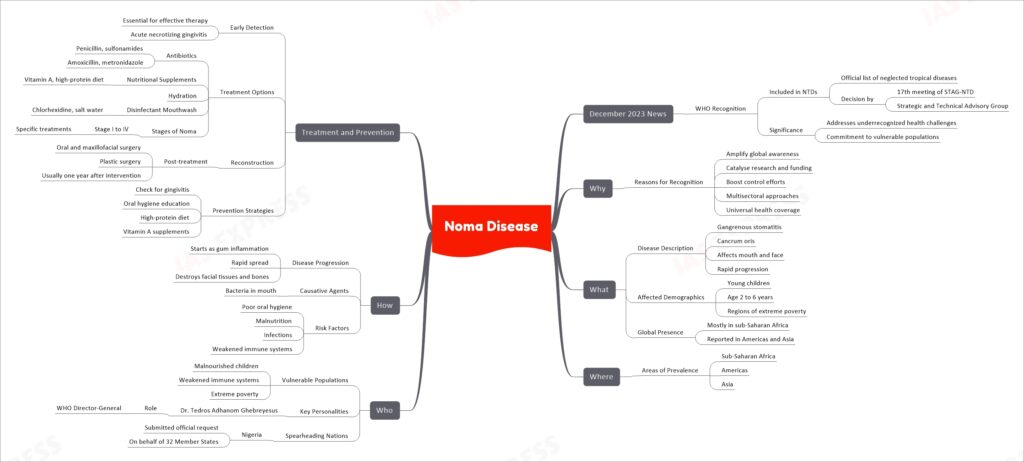Noma Disease

Noma disease, recently recognized as a neglected tropical disease by WHO, is a severe gangrenous condition affecting the mouth and face, primarily impacting malnourished children aged 2 to 6 in poverty-stricken regions. Its rapid progression leads to facial tissue and bone destruction, often resulting in death or severe disfigurement. Noma is caused by oral bacteria, exacerbated by poor hygiene, malnutrition, and weakened immunity. Early detection and treatment, primarily through antibiotics and nutritional support, are crucial. WHO’s inclusion of noma as an NTD underscores its commitment to addressing this long-neglected health challenge, aiming to boost awareness, research, and multisectoral intervention efforts.
If you like this post, please share your feedback in the comments section below so that we will upload more posts like this.

